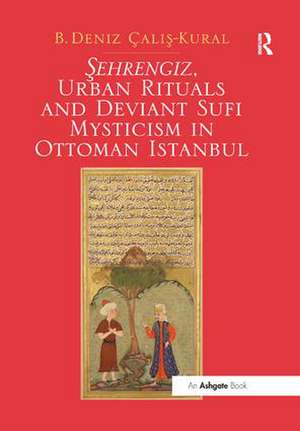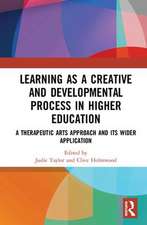Sehrengiz, Urban Rituals and Deviant Sufi Mysticism in Ottoman Istanbul
Autor B. Deniz Calis-Kuralen Limba Engleză Paperback – 5 feb 2018
| Toate formatele și edițiile | Preț | Express |
|---|---|---|
| Paperback (1) | 312.91 lei 6-8 săpt. | |
| Taylor & Francis – 5 feb 2018 | 312.91 lei 6-8 săpt. | |
| Hardback (1) | 771.88 lei 6-8 săpt. | |
| Taylor & Francis – 9 iul 2014 | 771.88 lei 6-8 săpt. |
Preț: 312.91 lei
Preț vechi: 372.02 lei
-16% Nou
Puncte Express: 469
Preț estimativ în valută:
59.87€ • 62.39$ • 49.58£
59.87€ • 62.39$ • 49.58£
Carte tipărită la comandă
Livrare economică 03-17 aprilie
Preluare comenzi: 021 569.72.76
Specificații
ISBN-13: 9781138548305
ISBN-10: 1138548308
Pagini: 290
Dimensiuni: 174 x 246 mm
Greutate: 0.48 kg
Ediția:1
Editura: Taylor & Francis
Colecția Routledge
Locul publicării:Oxford, United Kingdom
ISBN-10: 1138548308
Pagini: 290
Dimensiuni: 174 x 246 mm
Greutate: 0.48 kg
Ediția:1
Editura: Taylor & Francis
Colecția Routledge
Locul publicării:Oxford, United Kingdom
Cuprins
1 “Holy Paradise! Is it Under or Above the City of Istanbul?”
2 Gardens, Creative Imagination and the Theory of Intermediary Space in Ibn al-‘Arabî’s Philosophy and its Reception in the Ottoman World
3 Gazel Poetry and Garden Rituals (1453–1730): Ideal and Real Gardens of Love
4 Şehrengiz Poetry and Urban Rituals (1512–1732): Ideal and Real City Spaces of Love, Reconciliation and Liberation
5 Nedîm’s Poetry and New Rituals of the Tulip Period (1718–1730): The Construction of Gardens at Kağıthane Commons
6 The “Storehouse” of Ottoman Landscape Tradition: Gardens and City Spaces as Barzakh
Appendices
1 Life of Ibn al-‘Arabî
2 Disciples of Ibn al-‘Arabî in Bayrami and Melâmî-Bayrami Orders of Sufi Mysticism
3 Melâmî Poles
4 List of Şehrengiz Poems
2 Gardens, Creative Imagination and the Theory of Intermediary Space in Ibn al-‘Arabî’s Philosophy and its Reception in the Ottoman World
3 Gazel Poetry and Garden Rituals (1453–1730): Ideal and Real Gardens of Love
4 Şehrengiz Poetry and Urban Rituals (1512–1732): Ideal and Real City Spaces of Love, Reconciliation and Liberation
5 Nedîm’s Poetry and New Rituals of the Tulip Period (1718–1730): The Construction of Gardens at Kağıthane Commons
6 The “Storehouse” of Ottoman Landscape Tradition: Gardens and City Spaces as Barzakh
Appendices
1 Life of Ibn al-‘Arabî
2 Disciples of Ibn al-‘Arabî in Bayrami and Melâmî-Bayrami Orders of Sufi Mysticism
3 Melâmî Poles
4 List of Şehrengiz Poems
Notă biografică
B. Deniz Çalis-Kural is an architect and historian of Ottoman landscape and urban culture. She was awarded a BArch. by METU, Ankara, Turkey; a March. by Pratt Institute, Brooklyn, NY and a PhD degree from METU. For her graduate studies, Çalis-Kural was granted fellowship from TUBITAK-The Scientific and Technological Council of Turkey (1996-1998). She was a junior fellow at Dumbarton Oaks Garden and Landscape Studies, Washington, DC (2003-2004). Her work has been published in TOPOS and Dumbarton Oaks Publications, among others. She has taught at Yeditepe and Bahçeşehir Universities of Istanbul. In 2010-2011, she was a visiting scholar at the University of Virginia, School of Architecture. Çalis-Kural teaches in the Istanbul Bilgi University Faculty of Architecture.
Recenzii
'Şehrengiz, Urban Rituals and Deviant Sufi Mysticism in Ottoman Istanbul is thrillingly bold, demonstrating that the Ottoman Şehrengiz were a function of the Melami sufi order. This is as breath-taking as to say that performances at the Globe Theatre of Elizabethan England were a function of a secret mystical order penetrating the highest levels of government. Yet in this author’s hands the exposition proceeds at a calm, comfortable pace, rigorously supported and comfortably thorough.' Victoria Holbrook, author of The Unreadable Shores of Love: Turkish Modernity and Mystic Romance
Descriere
Examining the urban culture and landscapes of Istanbul through Şehrengiz, a genre of Ottoman poetry written in honor of various cities and provincial towns, this book questions the space culture of the Ottoman world in relation to practices of orthodox and heterodox Islam and imperial politics. The author traces how a sixteenth-century marginal protest movement evolved, by the early eighteenth century, into a movement of urban space reform.
























